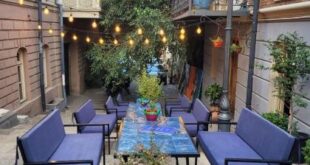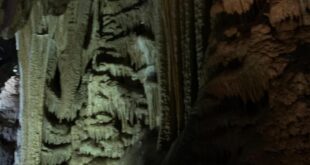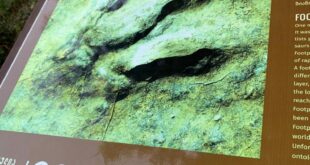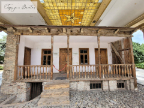Uplistsikhe: The Enigmatic Cave City of Georgia
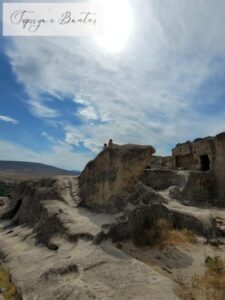
A Fortress Carved from Stone
High above the Mtkvari River Valley in Eastern Georgia sits Uplistsikhe, an ancient city chiselled into a rocky cliff.
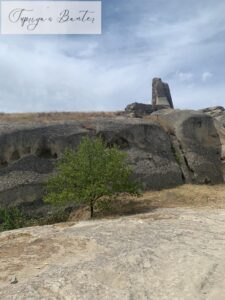
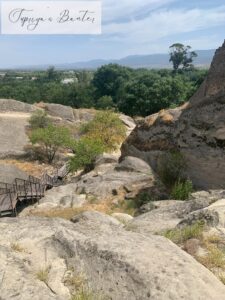

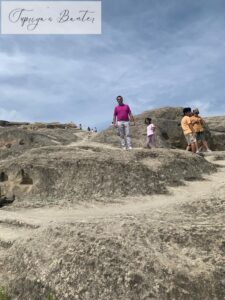

The term Uplistsikhe translates to “the fortress of the lord” from Georgian. It is an ancient cave city complex carved into sandstone on the southern slopes of the Kvernaki Mountain Range.
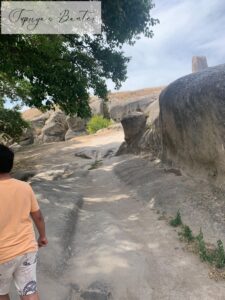
Getting There:
Uplistsikhe is in Georgia’s Upper Kartli region, about 80 kilometres west of Tbilisi. Located about 100 kilometres west of Tbilisi, the drive takes roughly 1.5 to 2 hours. Gori, just 15 kilometres to the east, is a great base for visiting the caves, whether on a day trip from Tbilisi or as part of a longer stay.
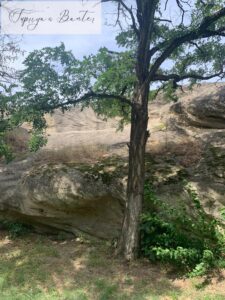

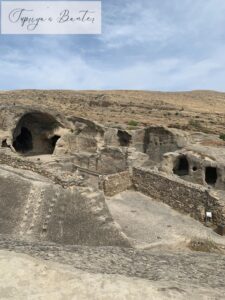
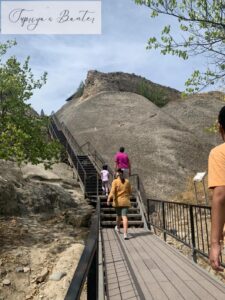
We had a day trip to Mtskheta, Stalin Museum & Uplistsikhe on a 10-hour private tour. The itinerary included visits to Jvari Monastery and Svetitskhoveli Cathedral in Mtskheta, Uplistsikhe, and the Stalin Museum. Hotel transfers and a guide were provided. Entrance to Uplistsikhe and the museum was not included and had to be paid separately.
Why Visit Uplistsikhe?
Uplistsikhe is an archaeological marvel that invites visitors to return to ancient times. With its labyrinthine streets and intricate rock-cut structures, this cave city showcases a blend of pagan and early Christian architecture. It’s a place where history comes alive, with each cave and tunnel telling stories of past civilizations.
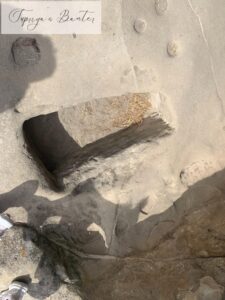
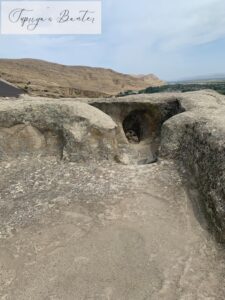
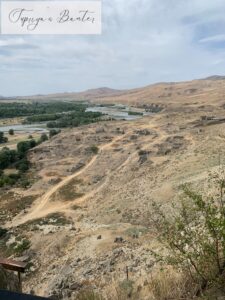
Uplistsikhe is Georgia’s oldest cave town and has significant historical importance. At first glance, it may appear as a peculiar moonscape of oddly shaped rocks and rounded openings. However, the craftsmanship, techniques, and labour needed to carve this complex from raw rock are evident.
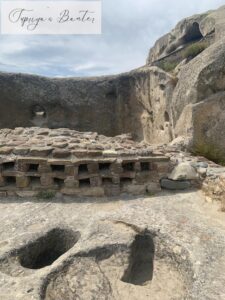
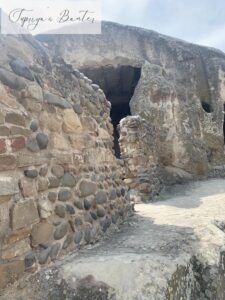
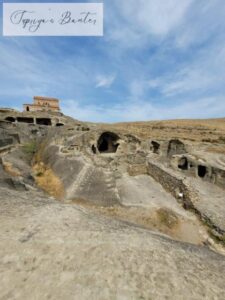
The architects of Uplistsikhe skillfully combined techniques and forms from Anatolia and Iran, as well as from both pagan and Christian traditions.

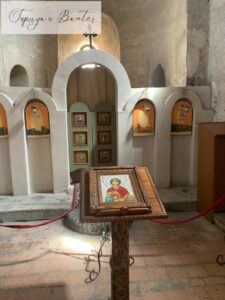
An Architectural Marvel
The cave town, unearthed in 1956, covers about 9 hectares and has three main districts with typical urban features like defensive walls, water systems, main streets, and various amenities. Uplistsikhe is a fascinating example of rock-cut architecture. The city, carved out of volcanic rock, is a maze of cave dwellings, temples, and public buildings.
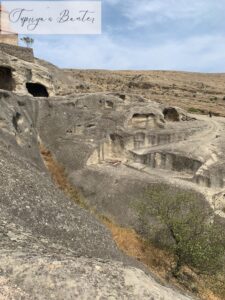
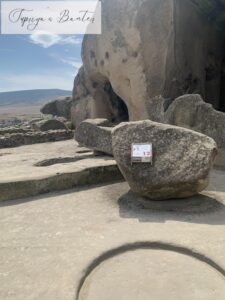

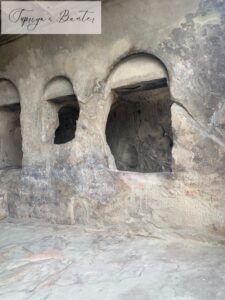
As you go from the main gate, you’ll find the theatre, a cave temple from the 1st or 2nd century AD where religious plays were performed. You’ll also see the pre-Christian Temple of Makvliani and a large hall known as Tamaris Darbazi, likely a pre-Christian temple.
A bulk of the Uplistsikhe rock-cut structures are connected via a narrow rock-cut pass and tunnels.
The central “street” is surrounded by charming narrow alleys and occasional staircases leading to different structures. Most caves lack decorations, but the larger ones feature beautifully carved coffered tunnel-vaulted ceilings that resemble logs. Some of these larger structures also contain niches, possibly used for particular ceremonial purposes.
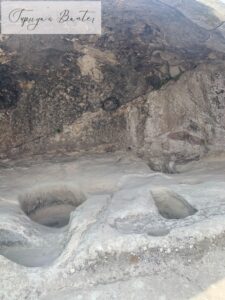
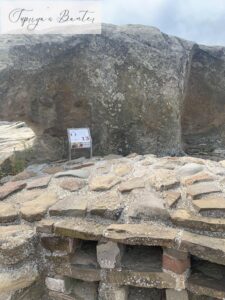
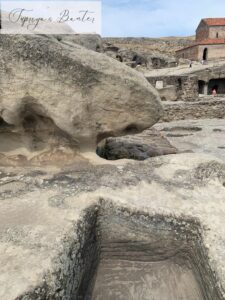

At the highest point of the complex stands a Christian Basilica, a stunning stone and brick construction from the 9th to 10th centuries.
There’s a sun temple as well as Uplistsulis Eklesia, a triple-church basilica from the 10th century.

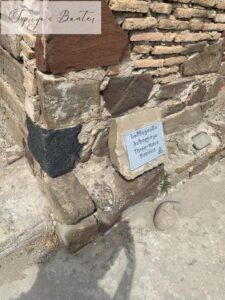
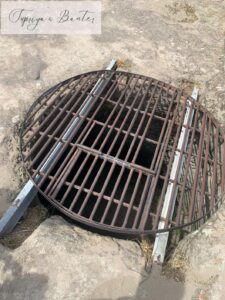

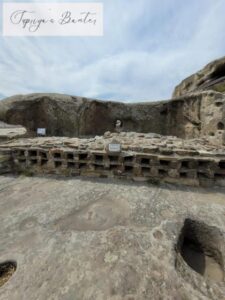
Exciting archaeological excavations have unearthed a wide array of artefacts from various periods, including precious gold, silver, and bronze jewellery, exquisite ceramics and sculptures. Many of these treasures are now carefully preserved at the National Museum in Tbilisi.
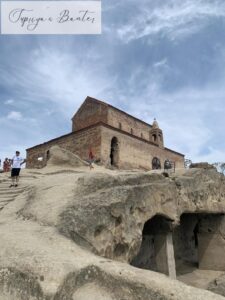
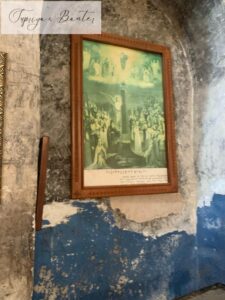
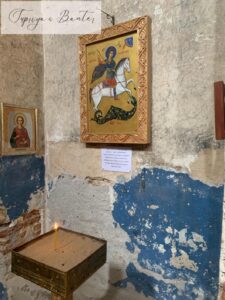
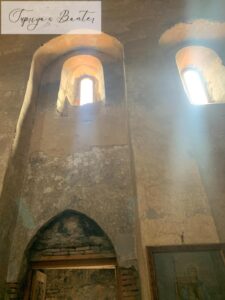
Highlights
Pillar Hall: This is one of the most important parts of the complex. It is known for the two rock pillars supporting the ceiling. You’ll also find a stone bench in this room.

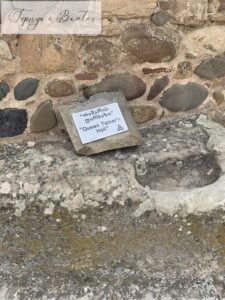


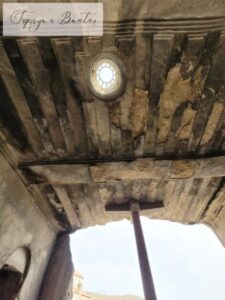
Ceremonial Hall, Hall With Caisson & Queen Tamar’s Hall: Some halls have beautifully carved coffered ceilings made from the soft surrounding rock, and the largest hall has a Romanesque arch on its facade.
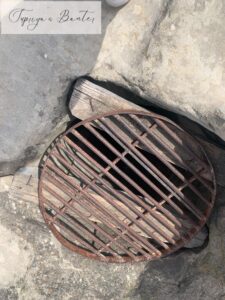
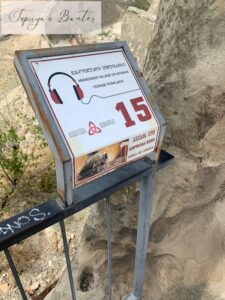
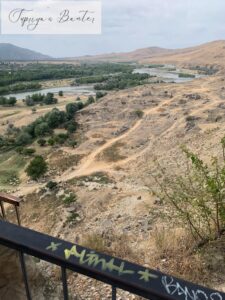
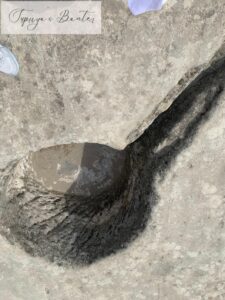

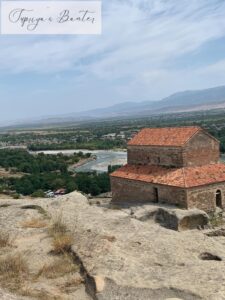
If you take a closer look, you will see that many of the chambers have wall niches, some of which were possibly used to secure livestock. The Church of the Prince.
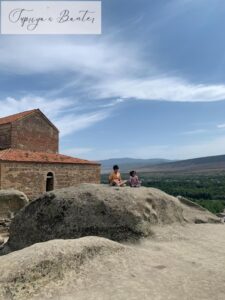


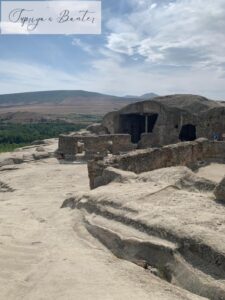
Three-Nave Basilica & the Church of Prince: Carved from the rock next to one of the halls, this basilica was built in the 6th century. In the 9th century, a stone and brick church was also added. The above-ground Church of Prince has a red-tiled roof, creating an interesting contrast to the cave forms.




Don’t miss the long tunnel, used for emergency escape and water transport, near the old main gate.
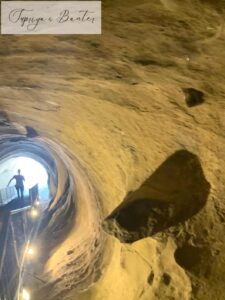

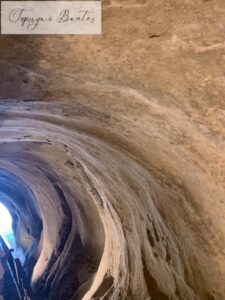
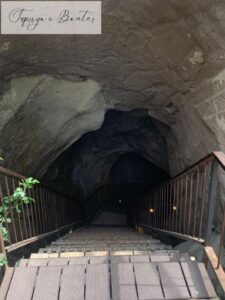
The complex has a small attached museum.


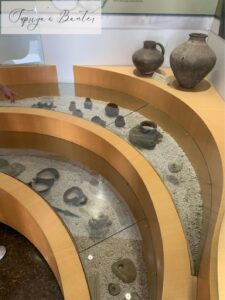

And there’s a 7-minute movie about the site that you should watch to get the gist of the historical significance of the ancient marvel.
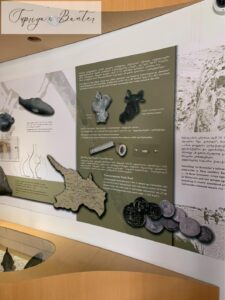
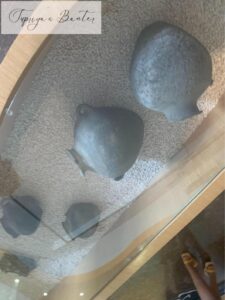
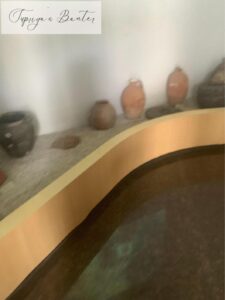

Stories from the Past
Uplistsikhe has a rich history that spans several centuries.


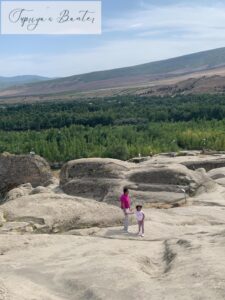
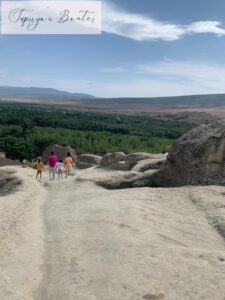
Founded around the 6th century BCE, the city was an important centre during the Persian Empire, Greek rule, and later, the Georgian Kingdom. It reached its zenith during the early Hellenistic period, becoming a significant political and religious centre. Its strategic location made it a key fortress and trading hub. The remains of ancient artefacts and inscriptions reveal much about its former inhabitants’ daily lives, trade, and religious practices.
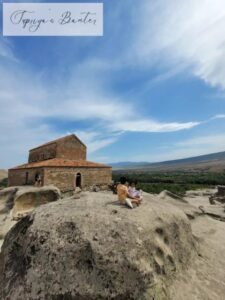
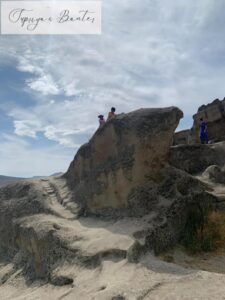

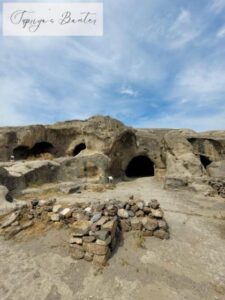
Uplistsikhe was known as the City of Temples and Worship and held this status for many centuries. It was a significant political, cultural, economic, and religious centre. The Mongol raids in the 13th century marked the town’s ultimate eclipse; it was abandoned and only used as a temporary shelter during foreign intrusions.

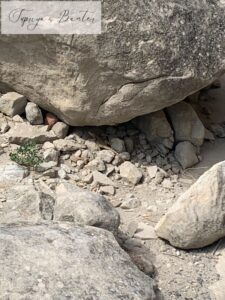
With Kartli’s Christianization, it lost its position to the new centres of Christian culture—Mtskheta and, later, Tbilisi.
Present status
Unfortunately, a significant portion of the most vulnerable areas was tragically destroyed by an earthquake in 1920.

The stability of the monument remains questionable. It’s wonderful to know that the Uplistsikhe cave complex has been under consideration for inclusion in the UNESCO World Heritage program since 2007, recognizing its incredible historical significance.
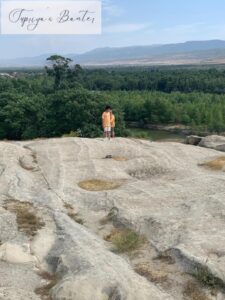

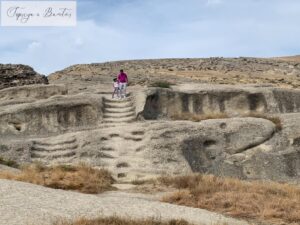
Best Time to visit
Uplistsikhe is open year-round, but the weather can be harsh due to its exposed location. Summers are scorching with limited shade, so it’s best to visit in the early morning or late afternoon. Additionally, the area can be very windy, with potentially gale-force winds. Spring is perhaps the best time to visit. The blooming wildflowers and lush green plains around Uplistsikhe make it great for photography.


Exploring the Region
The area around Uplistsikhe is just as fascinating. Gori, the nearest town, is famous for its connection to Joseph Stalin. This dedicated museum offers insights into his early life. Nearby, the picturesque Tana Gorge and Ateni Sioni Church offer further exploration opportunities. The Mtkvari River, which flows next to the site, brings a serene touch to the dramatic scenery.
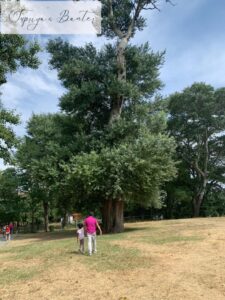
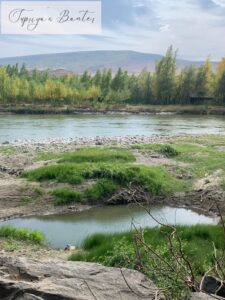
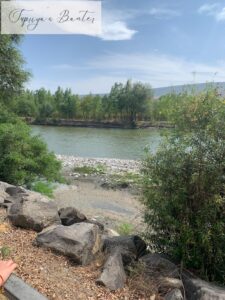
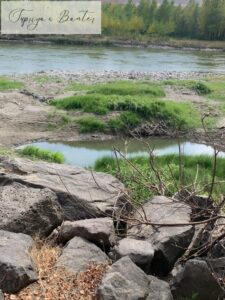
Travel Tips:

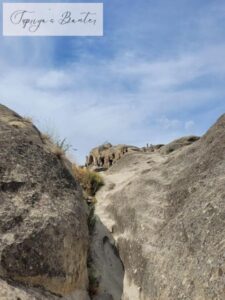
- When visiting Uplistsikhe, be prepared for uphill walking and steep staircases. The site is not wheelchair accessible and may not be suitable for those who have difficulty walking. Wear sturdy walking shoes and cover up in the summer. Wear sturdy shoes appropriate for uneven and rocky paths.
- Timing and Tickets: Uplistsikhe is open 7 days a week, including Mondays and holidays, with different hours in summer and winter. Entrance costs 15 GEL, and children under 6 enter for free.
- Dress Appropriately: To enter the church inside the complex, men should wear long pants, and women should wear a long skirt or pants. Georgia’s weather can be unpredictable, so it’s better to dress in layers.
- Stay Hydrated: Bring water, especially during hot weather, as facilities are limited on-site.
- Visit in the late afternoon to avoid tour groups and enjoy the panoramic view of the Mtkvari river basin from the higher rocks.
- Respect the Site: Follow any visitor guidelines to help preserve the site’s historical integrity.
Enhancing Your Visit


- Guided Tours: A guided tour can provide deeper insights into Uplistsikhe’s history and architecture, making your visit more informative. At the time of our visit, the admission fee was 15 GEL, and the guide service 45 GEL.
- Local Cuisine: Enjoy traditional Georgian food in nearby Gori or local villages. Khachapuri (cheese bread) and khinkali (dumplings) are delicious and authentic.
One of the oldest cave settlements, Uplistsikhe, dates back to the 2nd millennium BC.

The site is a remarkable destination where ancient engineering and natural beauty converge. Its rock-carved architecture and rich history offer a fascinating glimpse into Georgia’s past, set against a backdrop of stunning scenery.
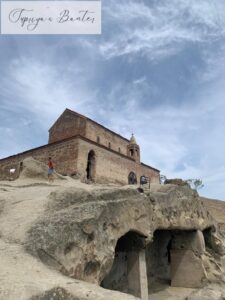
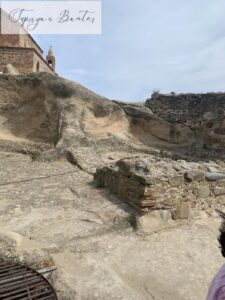
Continue Reading:
Georgia: A Wine Lover’s Dream Wrapped in Legends and History
Mtskheta, Georgia: The Sacred Side of Georgia
Jvari Monastery: A Glimpse into Georgia’s Past
Stalin Museum: A Journey into Georgia’s Complex Past
The Majestic Okatse Canyon: Georgia’s Natural Marvel
Crossing the Crystal Chasm: Georgia’s Diamond Glass Bridge
 Supriya's Banter
Supriya's Banter

